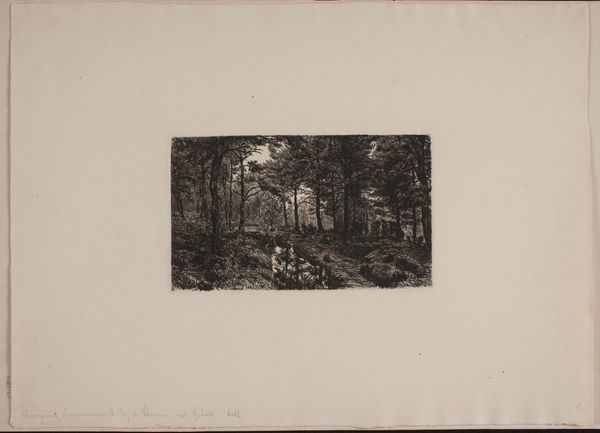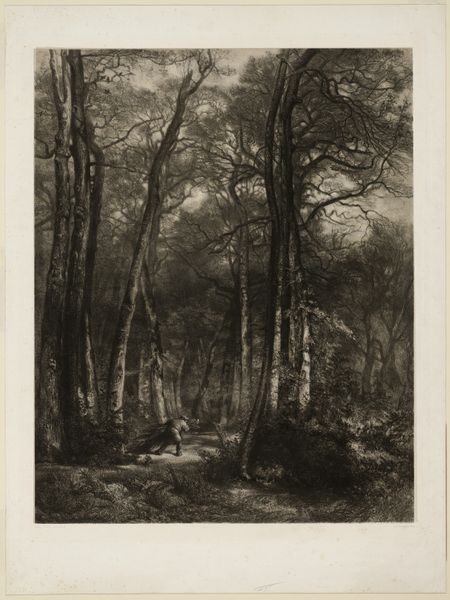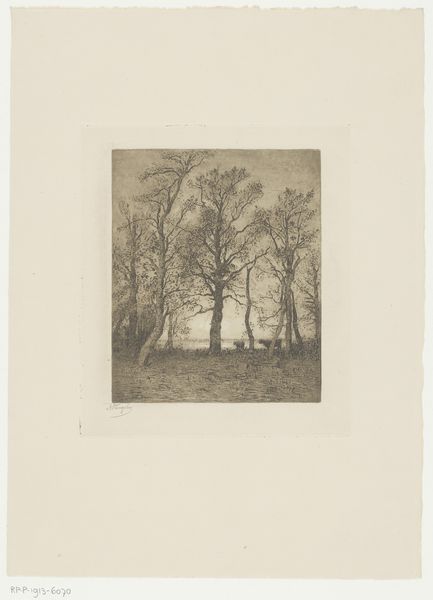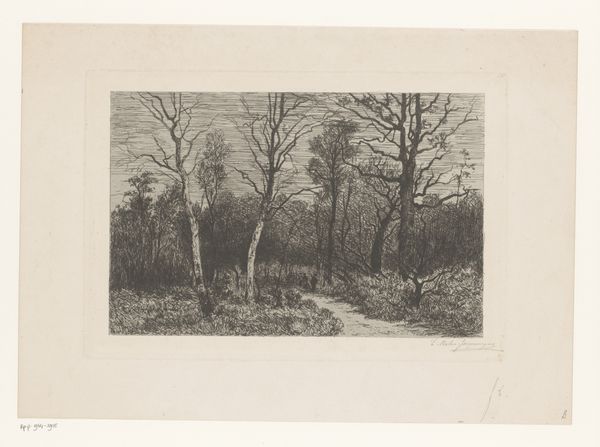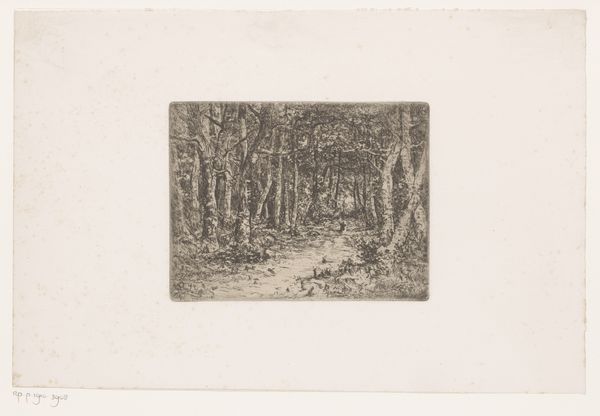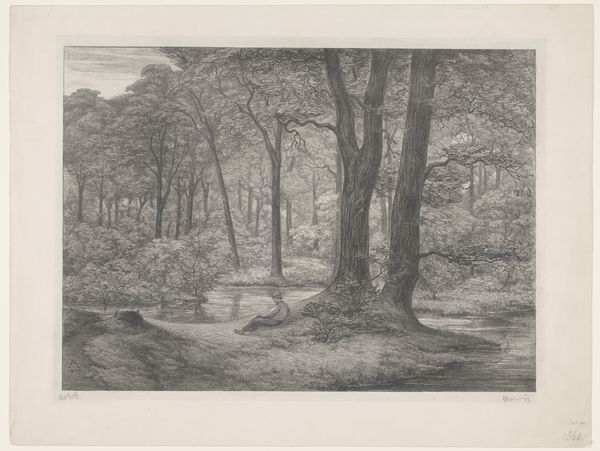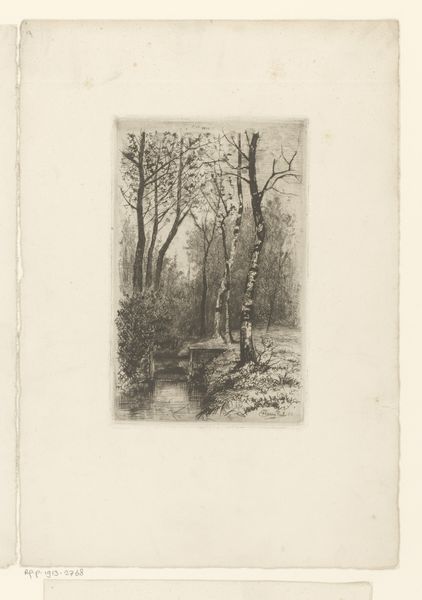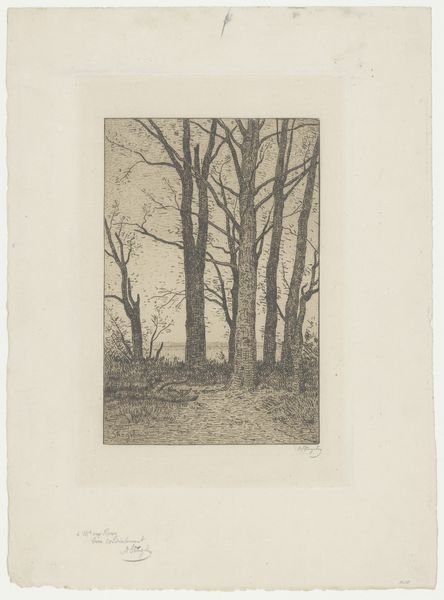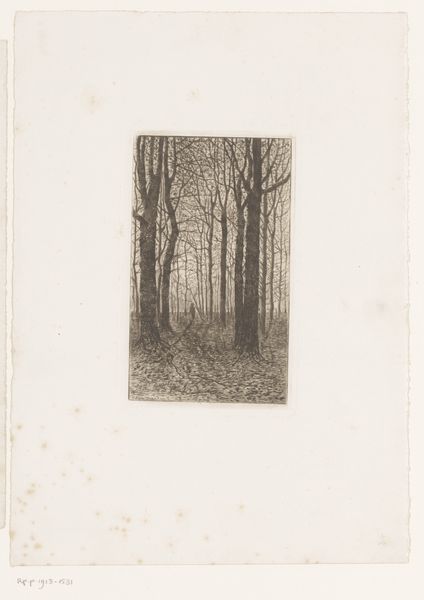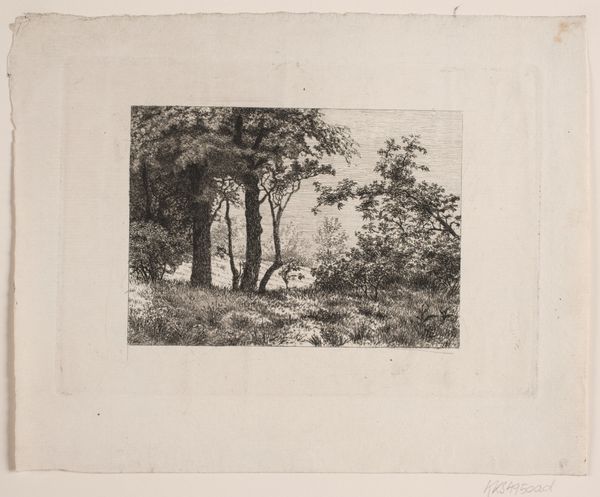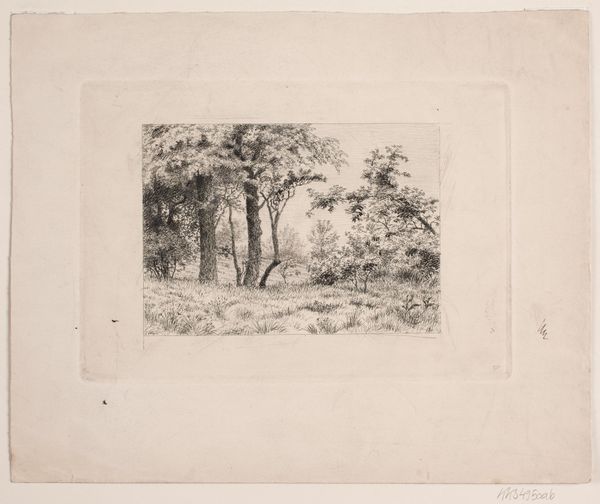
Dimensions: 208 mm (height) x 313 mm (width) (Plademål)
Editor: So this etching, "Troldeskoven," by Niels Skovgaard, created in 1893, evokes a powerful sense of mystery for me. The density of the forest is captivating. How do you interpret the formal elements at play here? Curator: Indeed. Skovgaard's masterful use of etching creates a complex interplay of light and shadow. Consider the foreground; the dense network of lines constructs a tangible sense of texture, leading the eye into the darker recesses of the woods. The composition reveals a calculated division: a dense, almost impenetrable darkness contrasted by pockets of implied light, but notice also that no specific objects, organic or otherwise, resolve from the dark areas; they exist only as values relative to one another, suggesting volume rather than signifying a thing. What impact does this strategy of rendering, do you think, has on our understanding? Editor: I hadn't noticed that, but it really heightens the sense of uncertainty. It makes the viewer question what is there. Curator: Precisely. Now, regard the varying densities of lines across the surface. The controlled hatching and cross-hatching techniques not only generate form, as you observed, but also evoke depth. Editor: It is amazing that such varied tones can be achieved through the controlled applications of only black lines. It also speaks to Skovgaard’s high technical skill, doesn’t it? Curator: It certainly does. What else catches your attention, from a purely formal perspective? Editor: I appreciate how the contrasting values emphasize the structure and volume, but how this also flattens the composition to emphasize the picture plane. This creates a visually appealing paradox in this picture. Thanks. Curator: An interesting assessment. Focusing solely on its visual components allows us to grasp its lasting impact.
Comments
No comments
Be the first to comment and join the conversation on the ultimate creative platform.

